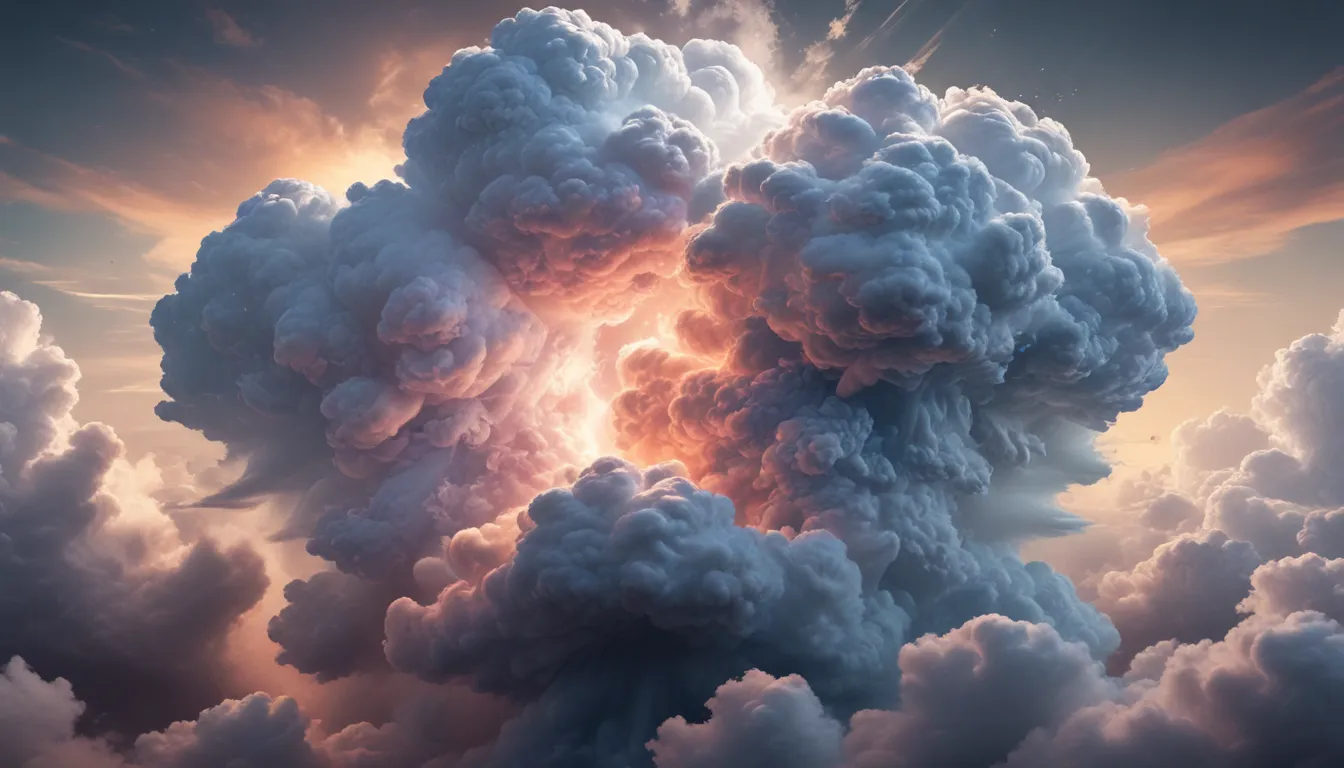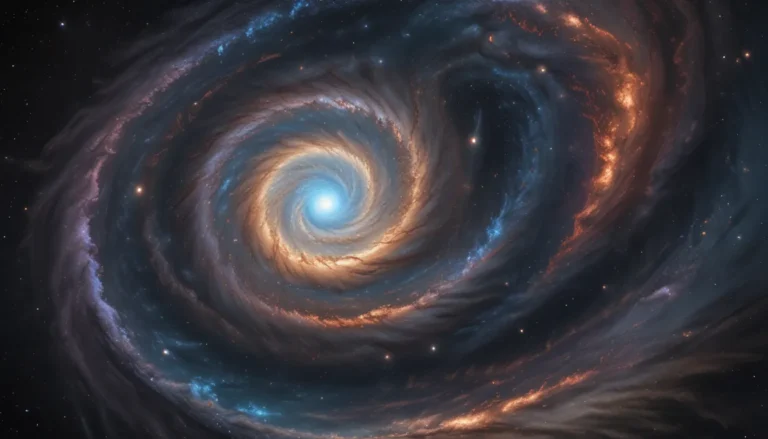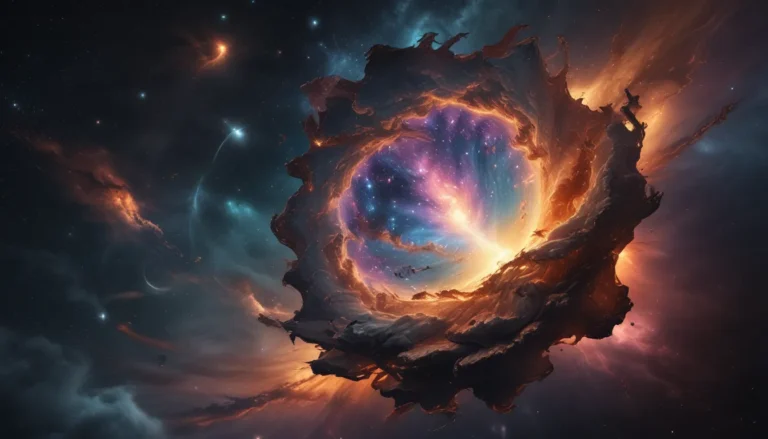The pictures we use in our articles might not show exactly what the words say. We choose these pictures to make you interested in reading more. The pictures work together with the words but don’t take their place. The words still tell you the important facts.
Are you ready to embark on an extraordinary journey through the captivating world of hydrogen clouds? These celestial formations, also known as H II regions, are more than just beautiful cosmic spectacles. They play a crucial role in the formation and evolution of stars, shaping the vast expanse of the universe. In this article, we will delve into eight unbelievable facts about hydrogen clouds that will leave you in awe of the wonders of the cosmos. From their massive sizes to the vibrant colors they emit, hydrogen clouds are truly fascinating celestial phenomena that continue to captivate astronomers and space enthusiasts alike.
Key Takeaways:
- Hydrogen clouds are massive, colorful, and essential for star formation. They play a crucial role in recycling interstellar matter, shaping the cosmos, and captivating astronomers with their vibrant beauty.
- These colossal clouds are stellar nurseries, birthplaces of stars, and energetic supernovae. They emit stunning colors, recycle interstellar matter, and influence the universe’s ever-evolving dynamics.
Birthplaces of Stars
Hydrogen clouds are the cradles of star formation in the universe. Within these majestic clouds, gravity causes the hydrogen gas to condense and collapse, birthing new stars that illuminate the cosmos with their brilliance. These stellar nurseries provide the necessary raw materials for stars to ignite and shine brightly across the expanse of space.
Massive Sizes
The sheer scale of hydrogen clouds is truly awe-inspiring. These colossal structures can span hundreds of light-years across, showcasing the vastness and grandeur of the universe. The accumulation of vast amounts of hydrogen gas over time results in the formation of these massive clouds that play a vital role in the cosmic dance of creation and destruction.
Vibrant Colors
Thanks to the ionization of hydrogen atoms, hydrogen clouds emit a stunning array of vibrant colors. The reddish glow of these clouds is a result of the emission of hydrogen-alpha (Hα) spectral line, indicating the presence of excited hydrogen atoms. These striking hues make hydrogen clouds a spectacular sight for astronomers and stargazers, adding to the beauty of the night sky.
Stellar Nurseries
Hydrogen clouds serve as the incubators for new stars in the universe. As the gas within these clouds collapses under gravity, it undergoes a process known as star formation, giving birth to protostars that evolve into fully-fledged stars. The dense regions within hydrogen clouds provide the perfect conditions for the birth and evolution of stars.
Ionization by Massive Stars
The intense radiation emitted by massive stars within hydrogen clouds is responsible for ionizing the surrounding hydrogen gas. This process strips electrons off the hydrogen atoms, creating a plasma of charged particles that emit light and make the clouds visible to astronomers. The ionization of hydrogen clouds reveals their dynamic nature and contributes to the colorful display they exhibit.
Energetic Supernovae
Within hydrogen clouds, massive stars eventually reach the end of their life cycles and undergo supernova explosions. These cataclysmic events release an immense amount of energy and eject heavy elements into space, enriching the surrounding interstellar medium. The debris from supernovae plays a crucial role in the formation of future generations of stars and planets, highlighting the interconnectedness of cosmic phenomena.
Interstellar Matter Recycling
Hydrogen clouds are key players in the recycling of interstellar matter in the universe. When massive stars reach the end of their life cycles, they release stellar winds and ejecta, dispersing enriched material back into the surrounding hydrogen clouds. This recycling process ensures that the necessary building blocks for the formation of new stars and planetary systems are readily available, contributing to the continuous cycle of creation and destruction in the cosmos.
Stellar Feedback
Newly formed stars within hydrogen clouds emit powerful stellar winds and intense radiation that influence their surroundings through a process called stellar feedback. These energetic winds and radiation shape the structure and dynamics of nearby gas clouds, triggering further star formation and sculpting the intricate patterns observed in the universe. Stellar feedback plays a crucial role in the evolution of galaxies and the formation of new celestial bodies.
The 8 unbelievable facts about hydrogen clouds shed light on the remarkable role they play in the ever-evolving universe. From being the birthplaces of stars to the recycling of interstellar matter, hydrogen clouds continue to captivate astronomers and deepen our understanding of the cosmos.
Conclusion
Hydrogen clouds are fascinating celestial phenomena that occupy vast regions of space. These cosmic wonders play a crucial role in the formation of stars and galaxies, holding many secrets yet to be discovered. From their abundance in the cosmos to their mesmerizing glow, hydrogen clouds continue to captivate astronomers and scientists alike, reminding us of the immense beauty and complexity of the universe.
FAQs
-
What are hydrogen clouds?
Hydrogen clouds are vast regions of space containing predominantly molecular hydrogen gas, serving as the building blocks of galaxies and providing the raw material for star formation. -
How do hydrogen clouds form?
Hydrogen clouds form when gravitational forces cause gas and dust to come together, leading to their collapse under their gravity and the subsequent formation of new stars. -
Why are hydrogen clouds important?
Hydrogen clouds play a crucial role in the formation and evolution of galaxies, acting as nurseries for the birth of stars and influencing the structure of the universe. -
How are hydrogen clouds studied?
Astronomers use various methods, including radio telescopes and spectroscopy, to study hydrogen clouds and analyze their composition, temperature, and density. -
Can hydrogen clouds be seen with the naked eye?
Primarily visible in wavelengths other than visible light, certain nebulae and emission nebulae partially composed of hydrogen can be observed with the naked eye under dark sky conditions. -
Are hydrogen clouds dangerous?
While hydrogen clouds themselves are not dangerous to humans, regions within these clouds where star formation occurs may contain intense radiation and stellar explosions. -
Can hydrogen clouds exist outside of galaxies?
Yes, hydrogen clouds can exist in the vast intergalactic space, often as remnants of galactic interactions or the fallout from supernova explosions. -
Are there different types of hydrogen clouds?
Indeed, hydrogen clouds come in various forms, including diffuse clouds, molecular clouds, and dark clouds, each with distinct characteristics and properties within the universe.
Explore the wonders of hydrogen clouds and expand your knowledge of the awe-inspiring phenomena that lie beyond our world. From their role in the cosmic web to their ability to act as cosmic nurseries, hydrogen clouds offer a glimpse into the intricate beauty of the universe. Join us on this journey of discovery as we unravel the mysteries of hydrogen clouds and the cosmic tapestry they weave in the vast expanse of space.






